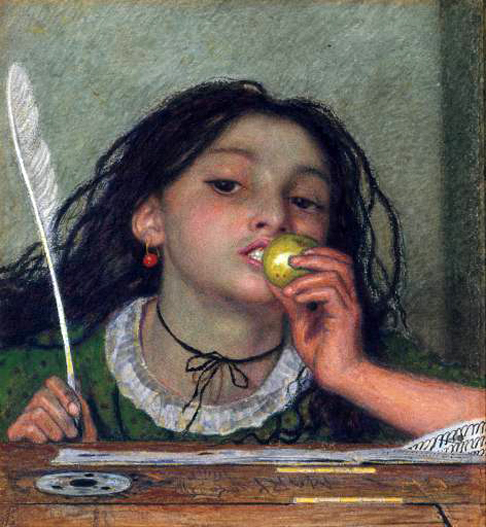Ford Madox BROWN was a english painter, designer, furniture designer e glass designer.
Brown was born in Calais on 16th April 1821, his father being a ships purser. Brown trained in Belgium, also in Paris. He visited Rome in 1845/6, coming into contact with the Nazerenes, a group of German painters based in the city. The Nazarenes pre-dated the Pre-Raphaelites, & the two movements had much in common. Brown married his cousin, Elisabeth Bromley, but unfortunately she died in 1846, leaving him with one child. Rossetti approached Brown, asking to be taken on as a studio pupil in early 1848. The suspicious Brown initially thought he was being teased, but on discovering that Rossetti was genuine, took him on as a pupil. This arrangement did not last long, as Rossetti replaced Brown as his instructor, with William Holman Hunt. This does not seem to have affected their relationship, however, as they remained friends until the end of Rossetti's life, when Brown designed his gravestone.
Brown never actually became a member of the PRB, but was closely associated with it. He was a painstaking slow worker, unwilling to accept compromise of any kind. This means that his output was small, but it was often of a very high quality, & a number of his pictures were startlingly original. He began three pictures in the early 1850s, entitled Work, The Last of England, & Autumn Afternoon. The first two of these paintings were masterpieces.
From the early 1850s Brown lived with Emma Hill, a working class London girl. After the birth of their first child, he married Emma in 1853. Brown worked for a time for William Morris, designing stained glass. In the late 1870s, he was commissioned to produce to paint a number of frescos, for the City of Manchester, at their new Town Hall, as a result lived in Manchester for a number of years.
Brown was a touchy somewhat difficult character, but was basically a kind, decent human being. There are a number of stories of his helping fellow artists, their widows & children when they were in difficulty. He had a highly original mind, produced some wonderful images. He may just have been the greatest of all these painters. He finally returned to London, died there in 1893.








































Nessun commento:
Posta un commento
Info sulla Privacy